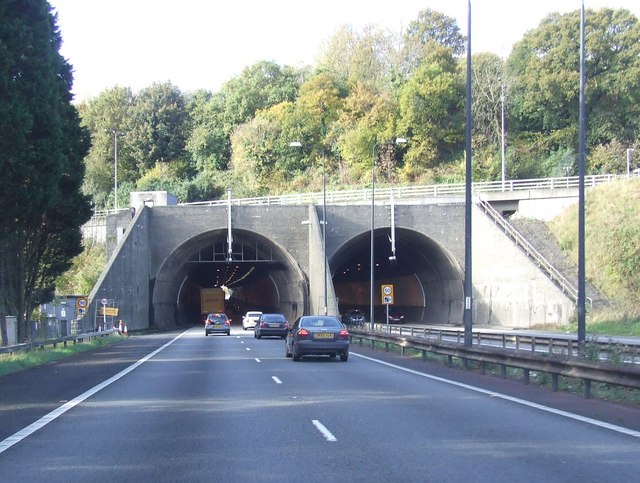It’s decision time for the M4 Relief Road proposal. We take a look at both sides of a heated debate.

After years of waiting, acres of press coverage, hugely expensive reports and plenty of old-fashioned mud-slinging, we’re finally going to get a decision on the infamous M4 relief road proposal. First Minister Mark Drakeford announced that he expects to make his report in the first few days of June.
Here’s an easy prediction: no matter what’s decided about the road, lots of people are going to be really angry. Because ever since the project was mooted (way back in 1991), it’s been an issue that’s completely polarised opinion. Is it possible to report both sides of the debate, succinctly, without getting into a tizz? We don’t know – but we’re going to have a go.
The M4 Relief Road in a Nutshell
As we probably don’t need to tell you, the M4 motorway heading west toward Newport frequently gets congested. Nose-to-tail traffic and long tailbacks happen not just at rush hours, but often in the middle of the day. The situation is worst at the Brynglas Tunnel, where the M4 narrows to two lanes. And as volumes of traffic increase, the problem is only likely to get worse.
The obvious solution might seem to widen the M4 to three lanes. But that may not be feasible to engineer — for example, there are homes above the Brynglas tunnels. So a more practical solution is the relief road that’s currently under consideration. This would run between Magor and Castleton, to the south of Newport, alleviating traffic on the existing M4.
Three alternatives have been suggested for the relief road, but the one most favoured by the Welsh government is the so-called black route. This would be a six-lane, 14 mile stretch of motorway that would cut through Newport’s docks and cross – controversially – the Gwent Levels. To cross the River Usk, a new bridge would need to be built.
Ferociously in Favour
Many, many people are desperate to get the new road, and it’s easy to see why.
Firstly, the existing bottlenecks are a major headache for road users. Anyone who uses the route regularly can expect to waste hours of time every month — accompanied by plenty of misery and frustration. What’s more, it’s dangerous. Although variable speed limits have reduced accidents, the rate is still above the national average. This is one of the oldest sections of the M4 and suffers from compromises in the original design.
Then there’s the effect on the Welsh economy. David Cameron famously referred to the Brynglas Tunnels as a “foot on the windpipe of the Welsh economy” and the Welsh CBI agree. They argue that congestion make businesses reluctant to relocate to Wales and makes retaining existing ones difficult. According to Chairman Chris Sutton:
“The M4 serves two thirds of the Welsh population and over two thirds of Welsh gross domestic product…[the relief road project is] the most important infrastructure project in Wales and of fundamental importance to the whole Welsh economy.”
As might be expected, the relief road has received strong support from the logistics and haulage sector.
In addition, it’s been argued that easing traffic flow will reduce local levels of pollution caused by stop-start traffic, including dangerous particulate air pollution.
And lastly, the road has popular support, with polls suggesting that around 60% of adults in Wales are in favour of the road.
Passionately Opposed
So, the proposed route will be good for motorists’ blood pressure, great for the economy and could reduce local pollution. Who could possibly argue against that? Plenty, as it turns out.
Not everyone is convinced by the economic value of the project. For example, a representative of the Federation of Small Businesses argued that “a £1bn piece of tarmac for around 13 miles” was not a priority for small businesses, arguing that the money would be better spent in developing transport throughout Wales and supporting the development of skills. And the amount of time saved by the relief road might be less spectacular than imagined: one official estimate is just 5 minutes in 2022 per journey at peak times, rising to 11.5 minutes in thirty years time.
The benefits also have to be weighed against two different environmental costs.
Firstly, the black route would run straight through the Gwent Levels, an area of remarkable biodiversity that’s been called Wales’ Amazon Rainforest. The route would run through four protected Sites of Special Scientific Interest and part of the Magor Marsh reserve. Critics of the scheme point to the mass extinction of species occurring across the world and oppose a scheme that lays down 125 hectares of concrete in a vulnerable local ecosystem.
Secondly, there’s the carbon footprint of the new road. Although there have been claims that by speeding up traffic, the road can reduce CO2 emissions, this seems unlikely. The costs of soil disruption, concrete production and increased road usage are likely to outweigh any benefits from reducing stop-start traffic. Then there’s the contradiction between the Welsh Government recognising a climate emergency, whilst building a new road.
Where Does That Leave Us?
The Relief Road project largely boils down to a familiar battle: economic benefits and day-to-day convenience against infrastructure costs and environmental damage. By the time you read this, the decision may have been made. Whichever way it goes, listen out for the howls of protest!
One thing’s for certain: relief road or no relief road, WVS will be here to look after your Volkswagen, Audi, Skoda, SEAT — or any other marque, for that matter. We provide services, repairs and MOTs, delivering a main dealer level of care at affordable prices. To book your vehicle in, or for any enquiries, get in touch.

